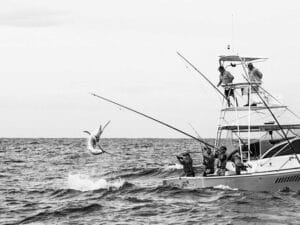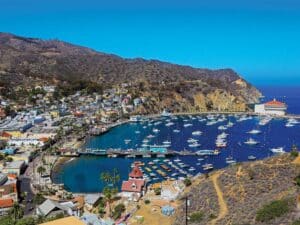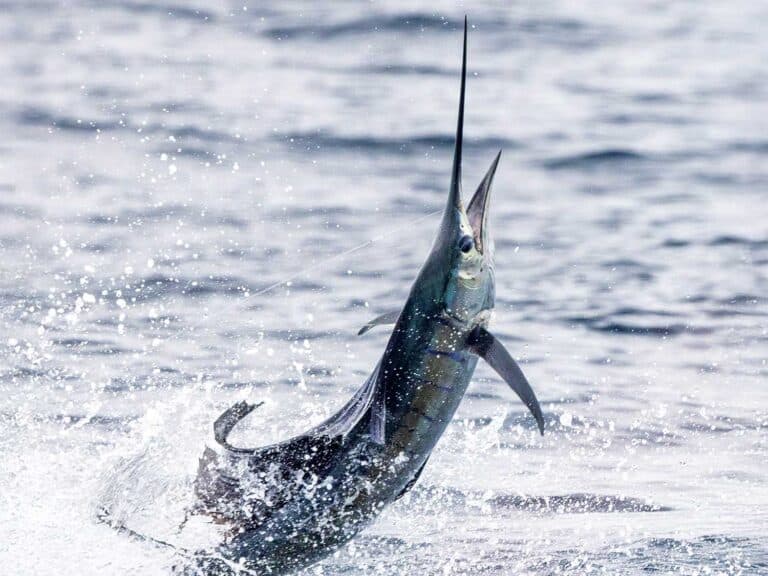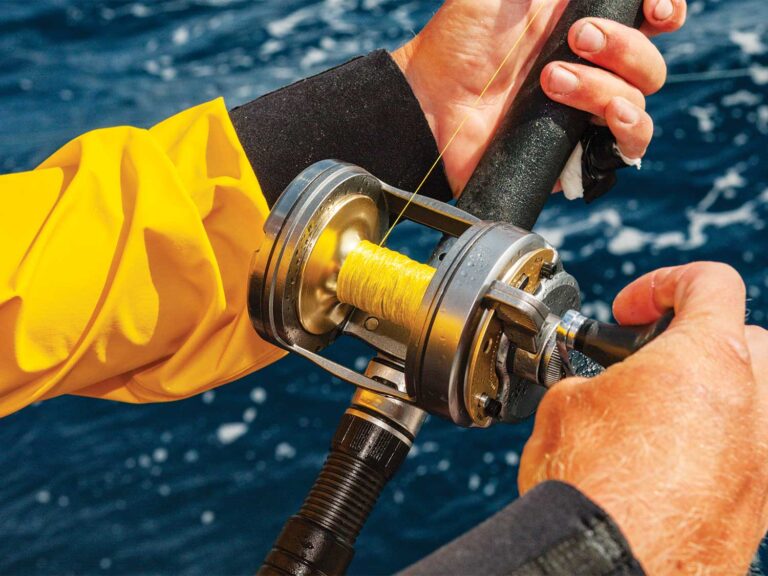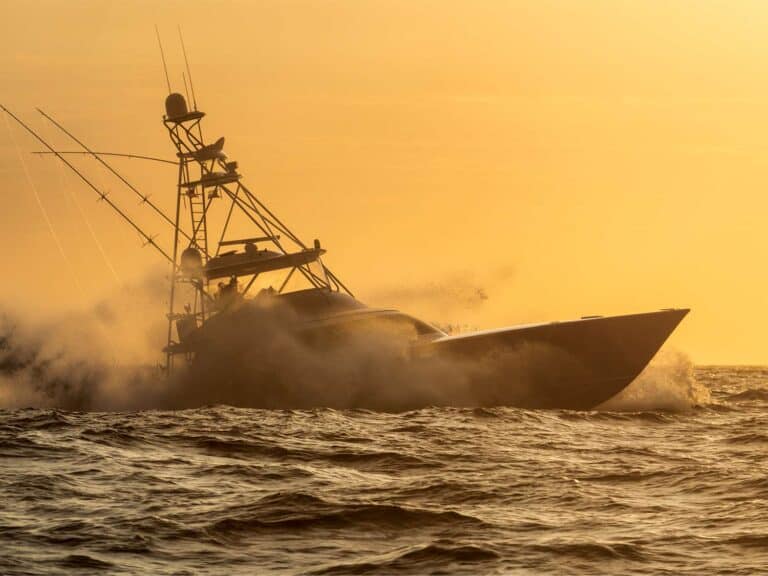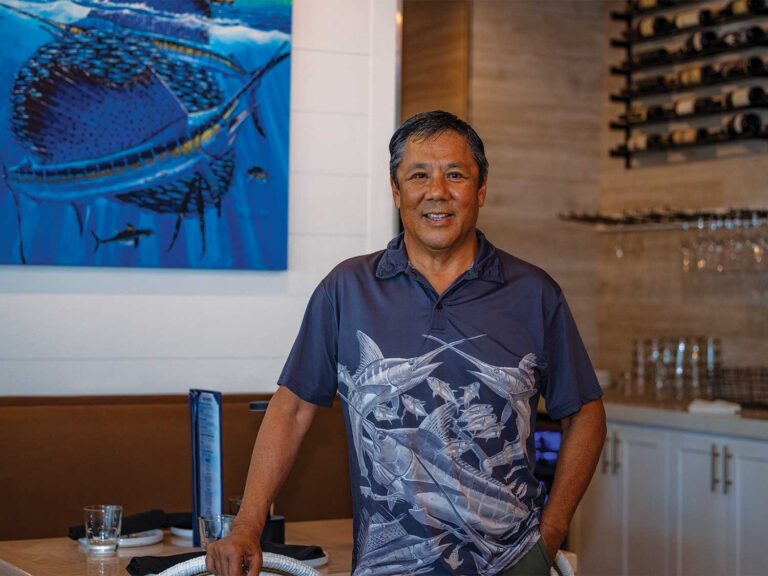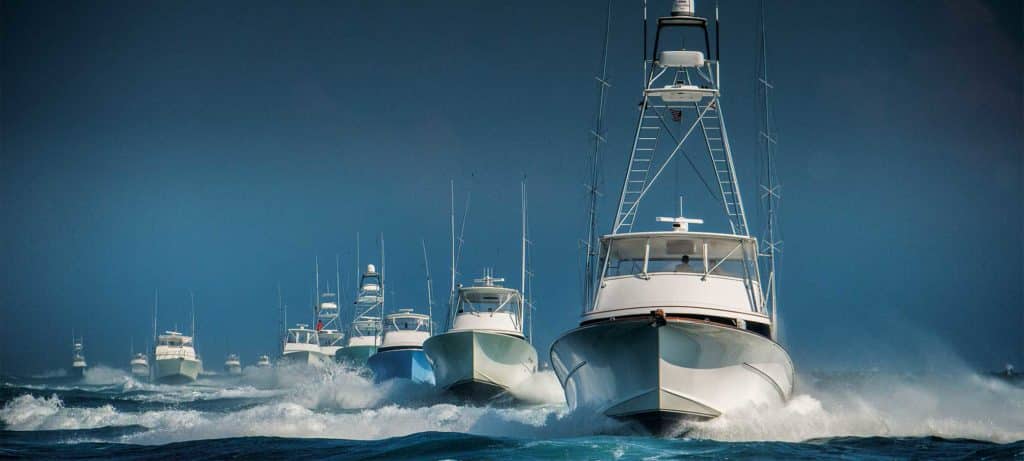
When five community members met one evening on the quaint waterfront of Morehead City, North Carolina, none of them could have imagined that their ideas would morph into one of the crown jewels of blue marlin tournaments—with millions of dollars in prize money, hundreds of boats and a charitable impact nearly beyond measure.
In April 1956, Bob Simpson, Dick Parker, Tom Potter, Jerry Schumacher and James Macy met at Captain Bill’s restaurant along with some other local businessmen to form the Fabulous Fishing Club as a way to boost the local economy and promote fishing off Morehead City’s famed Crystal Coast. Hoping to entice local captains to venture farther offshore in search of what they called the man in blue, a cash prize was offered for the first skipper to weigh a blue marlin. Though many fish were sighted, no one was able to land one that summer.
But the local captains did not give up, and the following year produced a much different result. On Sept. 14, 1957, Jimmy Croy landed a 143.5-pound blue marlin aboard Mary Z, captained by Bill Olsen. The first cash prize of 250 silver dollars was shipped from First Citizens Bank in Atlanta to Morehead City—an effort organized by Jesse Lee “Tony” Seamon—in time for the tournament, and the silver was presented by Seamon’s young son, Tony Jr., to Olsen in a red wagon donated by Rose’s Department Store. To continue celebrating Olsen’s accomplishment, a formal awards banquet was held at the Sanitary Fish Market restaurant.
Building on that success and excitement, the Fabulous Fishing Tournament was officially instituted in 1958. Twenty-eight blue marlin were landed the first year and the winning captain’s prize was $200.
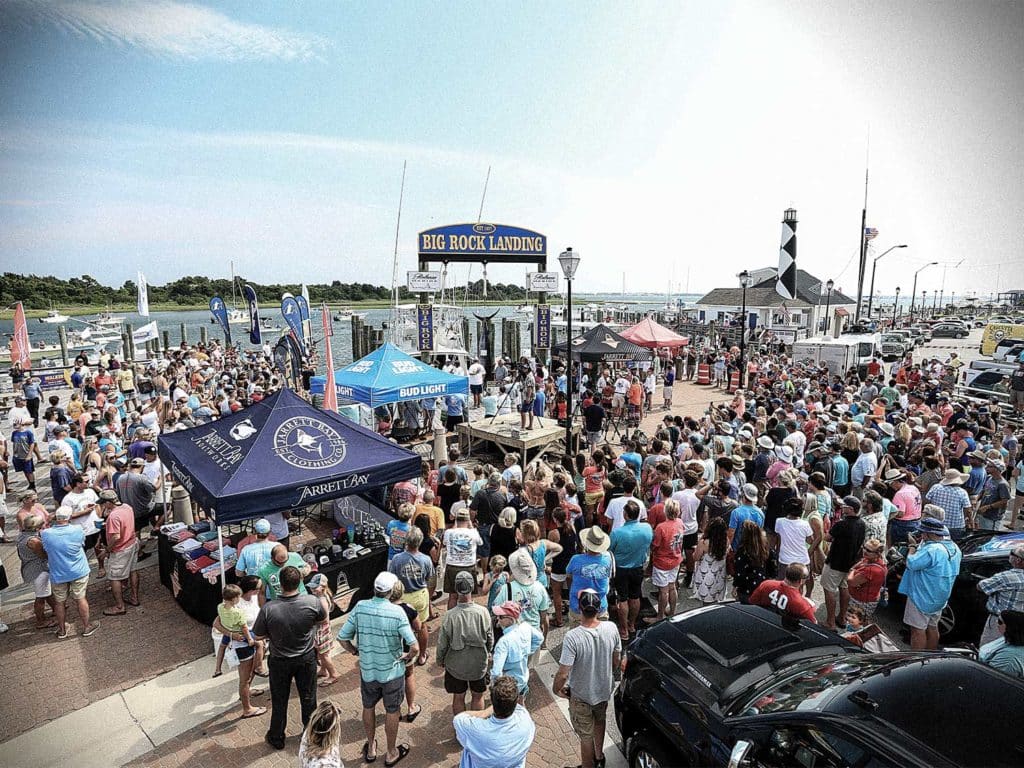
The Establishment Timeline
The tournament continued to grow in total purse, boat entries and community involvement. And in 1963, 20 women formed the Fabulous Fisherettes, a group that eventually grew to more than 50 members. The Fisherettes put on a fashion show to assist with fundraising and coordinated activities necessary to run the tournament—while also taking time for themselves to fish along nearby Shackleford Banks and Cape Lookout.
In 1969, the Red Snapper award was introduced to honor the captain that brought the first blue to the dock. This award is still presented today for the first 500-pounder weighed in the tournament, but is now known as the Fabulous Fisherman.
Big things were happening for the tournament, and in 1973, Morehead City’s Warren “Bump” Styron—who won it in 1970—officially changed the name to the Big Rock Blue Marlin Tournament to honor the famous fishing grounds. He bought a 2,000-pound scale and erected it near Captain Bill’s, and Casey Wagner, a current Big Rock board member, fished his first Big Rock. He has since been a staple of the tournament—only missing one since 1973.
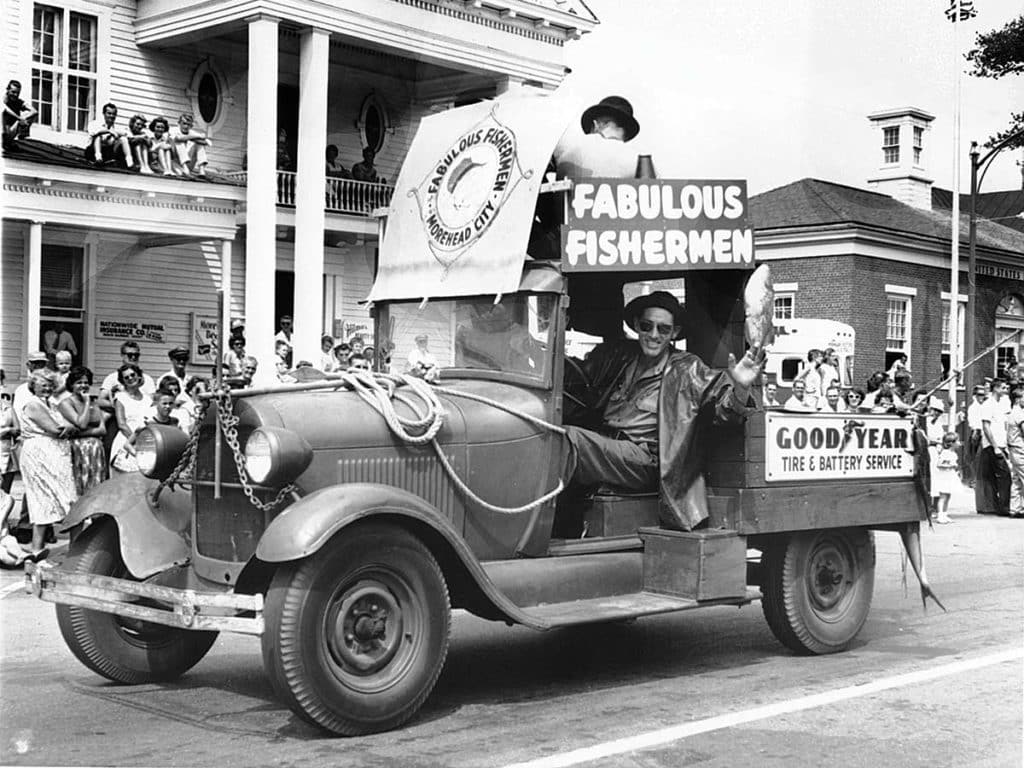
The Crystal Coast continued to lure competitors, with 106 teams taking part in the 1975 tournament, making it the largest event on the East Coast—and perhaps in the United States at that time. Five years later, Margaret Adams, fishing aboard Jet Stream, made history by landing a 390-pound blue marlin to win both the tournament and the Top Lady Angler award in 1980.
As the event continued to gain momentum, McDonald’s became a sponsor in 1981; in 1982, the Big Rock made its first-recorded community donations: $3,000 to the Ronald McDonald house in Durham, North Carolina, and $3,000 to the Newport Developmental Center in Newport, North Carolina. This was the beginning of a new focus and purpose for the tournament because the Big Rock’s success spurred more corporate sponsorship—which in turn allowed the tournament purse and community giving to grow, eventually requiring the board to add members. In 1985, Wagner joined the Big Rock board of directors, and just two years later he was placed in charge of public relations with a spotlight on community involvement.
Addressing conservation efforts in 1987, the board added a penalty for bringing undersized fish to the scale. That same year, Beaufort, North Carolina’s Randy Ramsey of Jarrett Bay Boatworks became a board member. In 1990, the North Carolina Governor’s Cup Billfish Conservation Series was created by board member and beloved weighmaster, the late Dale Ward and Dr. Bill Hogarth of the North Carolina Department of Marine Fisheries, which established tag-and-release as well as setting an increase in size minimums for landed marlin.
In 1998, the first Big Rock Lady Angler Tournament was launched to concentrate on benefiting local women’s charities and, similar to Big Rock, the entries and charitable giving continued to grow. The same year, the Big Rock had a banner tournament when the total purse exceeded $1 million and a record fleet of 206 boats participated. The board instituted even stricter minimum lengths and weights, and introduced a more robust release category to further promote conservation.
While many fish were brought to the dock in the past, the tournament’s board of directors have consistently instituted conservation efforts to maintain release rates of 90 to 95 percent. Not only were rules put in place to encourage conservation, but throughout the tournament Ramsey also provides radio updates of the leaderboard to dissuade any teams from bringing smaller fish to the weigh station.
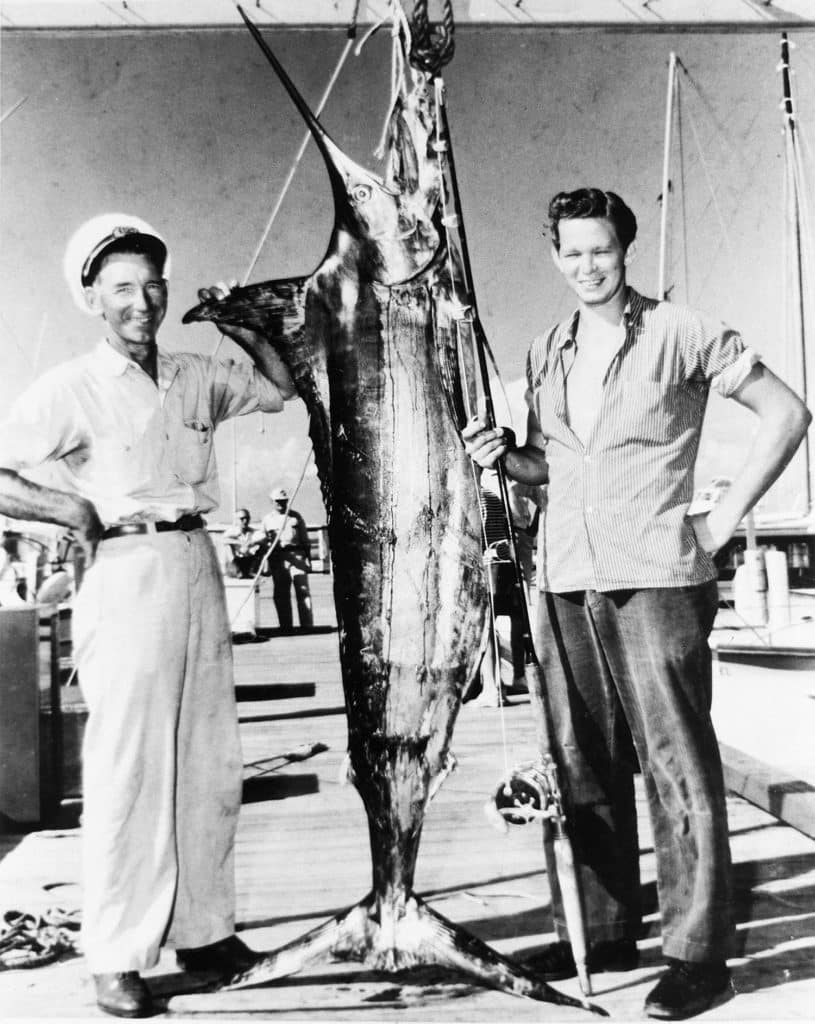
Tragedy to Triumph
The tournament seemed to be unstoppable and on cruise control until tragedy struck the Big Rock. Veteran mate Chris Bowie, 41, of Ocean City, Maryland, was pulled overboard some 60 miles offshore while wiring a blue marlin in 1994. The tournament boats, U.S. Coast Guard, and Navy helicopters and cutters searched for Bowie for 72 hours, but he was never found. The tournament continued that week, but the spirit and energy were greatly diminished by the loss, leading the Big Rock board to set up a trust fund for Bowie’s family—with an initial $10,000 donation.
Tropical Storm Allison and hard days of fishing highlighted the 2001 event. Despite the weather, the ladies tournament hosted a record 34 boats and 1995 Big Rock winner, Capt. Adrian Holler, won the $942,000 purse fishing aboard Sea Striker.
Because the Big Rock worked with the North Carolina Governor’s Cup to promote tag-and-release, circle hooks became mandatory for all mainline under 80-pound-test and any leader below 200-pound-test in 2007. That same year, Holler topped the release leaderboard, proving Lady Luck liked Morehead City’s Sea Striker.
In 2009, the Big Rock board renamed the ladies event the Keli Wagner Lady Angler Tournament to honor a longtime friend, fisherman and the wife of Casey Wagner. Keli was an avid angler and advocate for the Raab Oncology Clinic, where she received treatment for eight years before succumbing to breast cancer in October 2008.
“Naming the tournament [after] Keli is truly an honor to her and our family,” Wagner says. “It is our hope that through the tournament, we can create a higher level of interest and awareness regarding the needs of those battling cancer.” The charitable donations given to the Raab Clinic help fund patients’ care and comfort during their treatments.

A Unique Event
After 15 years of dreaming of and planning a perpetual trophy for all past and future Big Rock and KWLA winners, board members erected a 17-foot-tall bronze blue marlin sculpture and fountain, which was dedicated in 2013. Appropriately, the fountain sits right behind Southern Salt Seafood—formerly Captain Bill’s—where it all began.
Charitable and community contributions grew in 2016 when the Big Rock board donated a record $571,000, with more than $262,000 going to the Salvation Army for a new facility. Two years later, the KWLA tournament hosted a record of 161 boats in the one-day event, making it the second-largest tournament in North Carolina, giving points for billfish releases as well the largest tuna, dolphin and wahoo.
Over the past 60 years, the Big Rock events have created many memories for generations of anglers and their families.
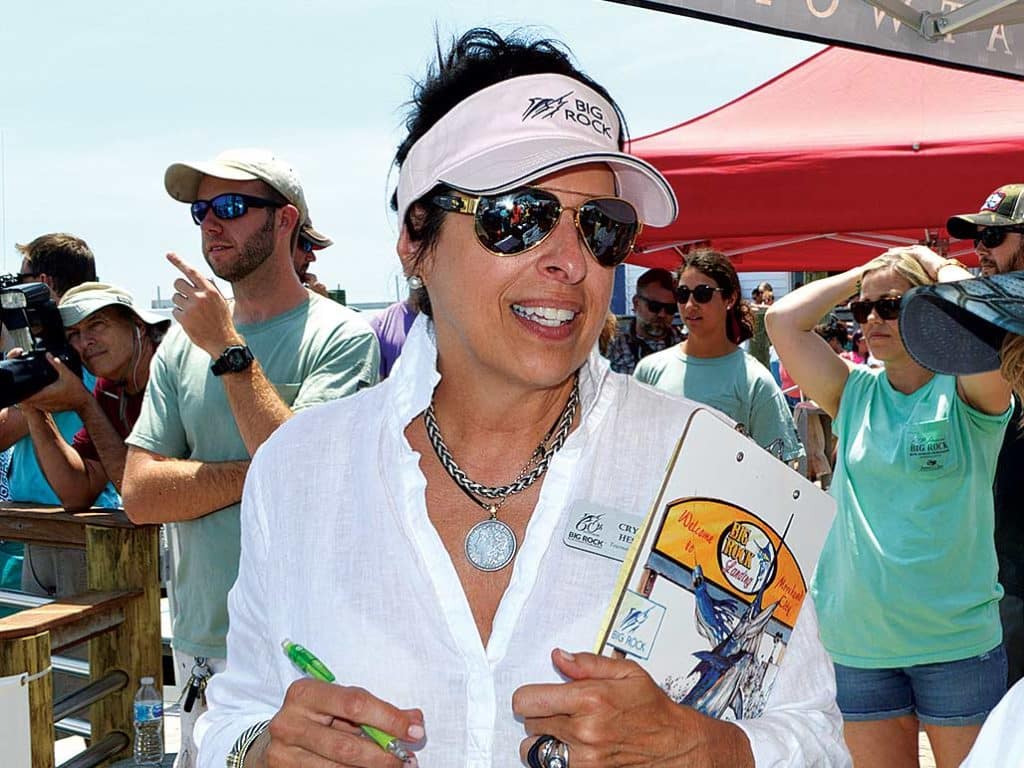
“My favorite memory came from our inaugural Big Rock, Big Hero, which hosts active-duty military on participating boats during tournament week. That event in 2018 will forever be one of my favorite things we have ever done,” Tournament Director Crystal Hesmer says.
There is simply nothing that compares to the community involvement in the Big Rock Blue Marlin Tournament. When anglers and their families arrive in Morehead City, they are fully aware the event is taking place. Business owners’ signs welcome anglers, the light posts display Big Rock banners and there is an excitement in the air as the marinas overflow with sport-fishing boats. According to Ramsey, “Many non-tournament fishing families plan their vacations the same week as the Big Rock to participate in the nightly activities at the weigh station and other venues.” The weeklong celebratory atmosphere is exhilarating, which demands that anglers and captains bring their A games.
The Big Rock is uber-competitive and draws an abundance of angling talent to the Crystal Coast. That talent includes angler Ron Wallschlager, who landed an 831-pound monster on Summertime Blues with Capt. Al Johnson at the helm in the year 2000—a tournament record that still stands today.
With 60 tournaments completed, many believe that some teams have won multiple times. In fact, there are only a small number of repeat winners. Capt. George Bedsworth tops the board with four wins followed by Capt. Arthur Lewis with three and Holler with two.
Winning a tournament of this size and caliber certainly brings bragging rights.
“Many of the past winners have said they would much rather have their names engraved on the base of Big Rock fountain with all the previous Big Rock and KWLA winners than have the money,” Ramsey says.
With such ambitious anglers, preparation for the event is zealous.
“Just as the PGA tour has many tournaments, there are only four majors,” Wagner says. “The Big Rock is certainly a major tournament on the East Coast and even the world,” so many crews plan months in advance and no expense is spared—boat, tackle or crew.
Ramsey advises, “No matter if a boat is in the boatyard for repair, or a new build, the beginning of the Big Rock is D-Day for Jarrett Bay.”
The Big Rock and the KWLA are the two largest tournaments in North Carolina, and while they do focus on fellowship and having fun, crews take the competition very seriously. Ramsey shares a story in which a charter asked the captain which days they would be fishing in advance, so he could invite guests. The captain advised him that such information was subject to the weather, where the fish are, and how many other boats are fishing on any given day; he then told the charter that if they were not going to fish the Big Rock seriously, then they might need to find another boat.

So, what makes the Big Rock one of the oldest and most successful competitions in tournament history? Its leadership.
“The Big Rock board of directors is truly a great team made up of many quality North Carolina business owners from various backgrounds; each bringing a unique specialty and perspective,” Wagner says.
The event maintains the philosophy of charity first, and it is this mantra that makes the board so passionate. Last year, the tournament surpassed $5 million in charitable donations, and through the years, the board has taken the lead in endowments to various local programs. This financial support adds credibility to those programs, which spurs giving from other local businesses and individuals.
While the purse for 2018’s 183-boat Big Rock topped $2.5 million dollars, 2019’s tournament is fast approaching, and you can bet many teams are putting the final touches on their preparations, thinking about strategy and anticipating what the purse might be this year. One thing you can definitely count on, whether a fish is brought to the scales or escapes, fun will be had by all and the Big Rock will continue its tradition of giving back to the community—in fellowship, economic energy and philanthropy.
What’s In a Name?
Exactly what is the Big Rock?
Randy Ramsey explains: “The Big Rock lies 35 miles southeast of Beaufort Inlet. The [9-mile long, 1-mile wide] structure begins near the 50-fathom curve and runs to the 100-fathom curve. It was discovered by a local charter captain and due to its size, it was easy to find using primitive depth sounders. In addition, the Big Rock holds bait that brings in larger pelagic species to the area.”
While we do not know if any winning fish were actually caught on the Big Rock, we do know that in the early years of the tournament, many captains fished near that location or on that exact spot because of its proximity and reliability in producing a catch.
Learn more about fishing off North Carolina’s famed Crystal Coast.
Tournament Core Charities
The Newport Development Center
Serving children in prekindergarten and their families.
The Station Club
Assisting people with intellectual/developmental disabilities, empowering them to reach their full potential.
Take a Kid Fishing
An annual day on which more than 1,000 disadvantaged children go fishing.
North Carolina Aquariums
Educational programs about marine wildlife, fishing and conservation.
The Salvation Army
Aiding in many domestic and international community issues.
Crystal Coast Hospice House
Presenting a peaceful, caring setting for affected patients and families of the Crystal Coast.
In addition to these charities, the Big Rock Blue Marlin Tournament participates in other local programs in which anglers and crews are personally involved. The Big Rock Stadium supports the American Legion baseball teams and the Big Rock Marlins during the summer months. The Marlins participate in the Coastal Plain League, which helps players refine their skills utilizing wooden bats.
Another local program is the Morehead City Little League. 2018 Big Rock winner Honey Hush‘s Capt. Chuck Lindner has been involved in Little League more than 30 years—and while his children no longer play, he continues to serve as president. In early 2019, the Big Rock donated more than $150,000 to the league’s Field 5 Project, located at Swinson Park, to help Carteret County make it a regulation baseball field.
